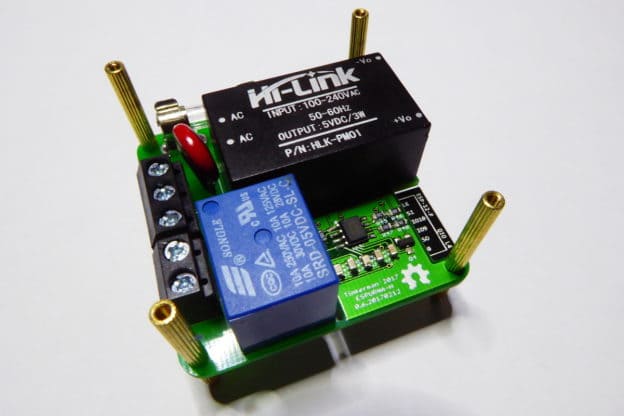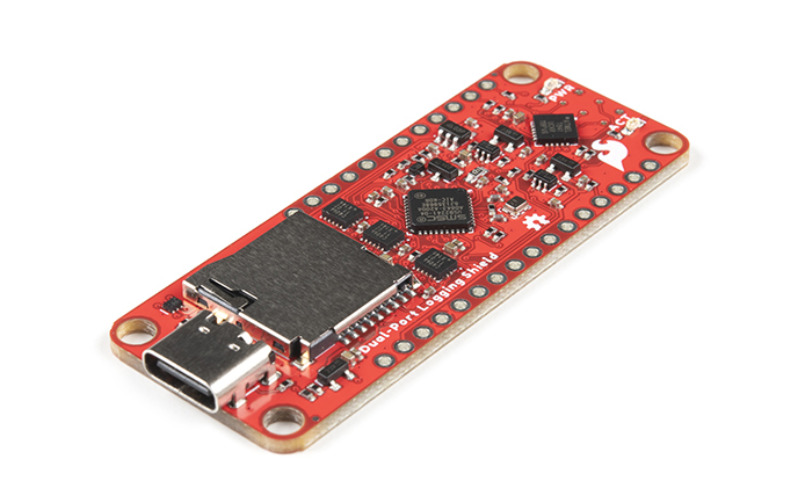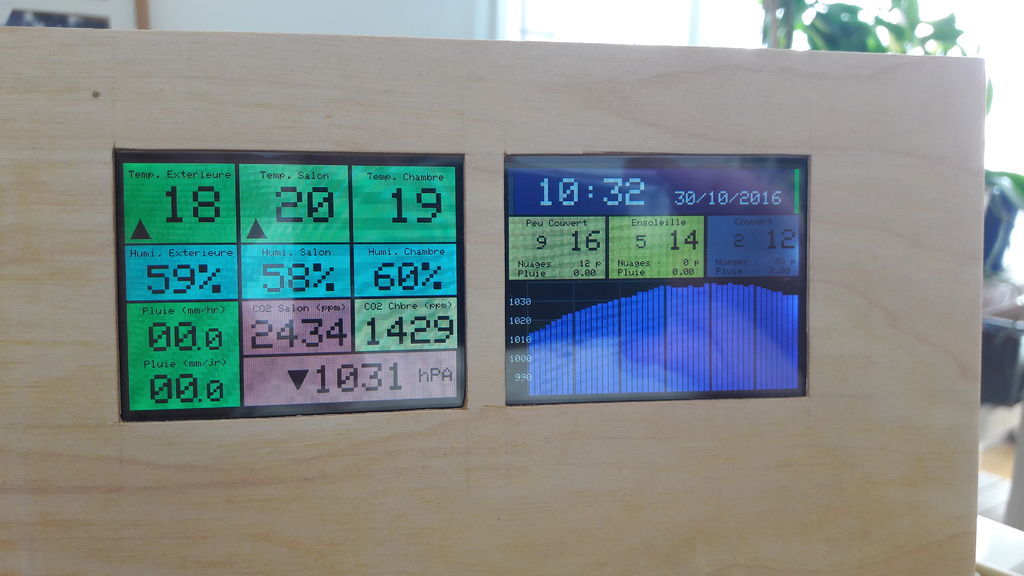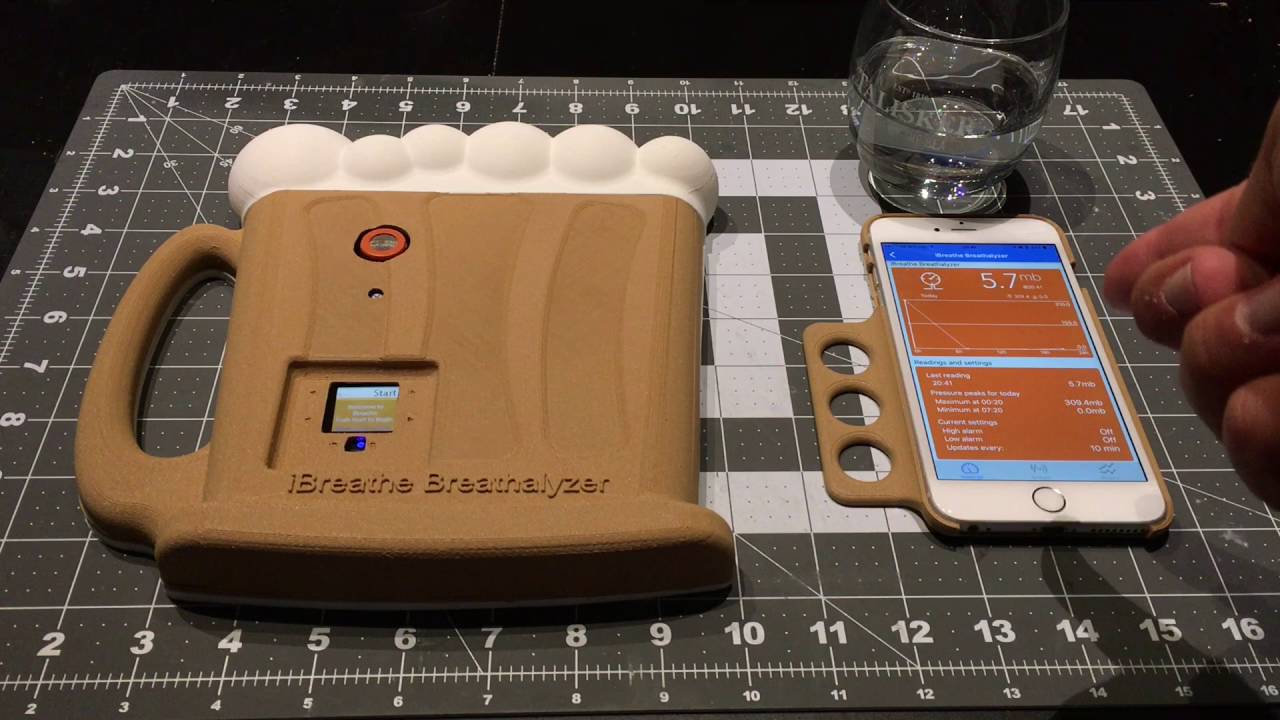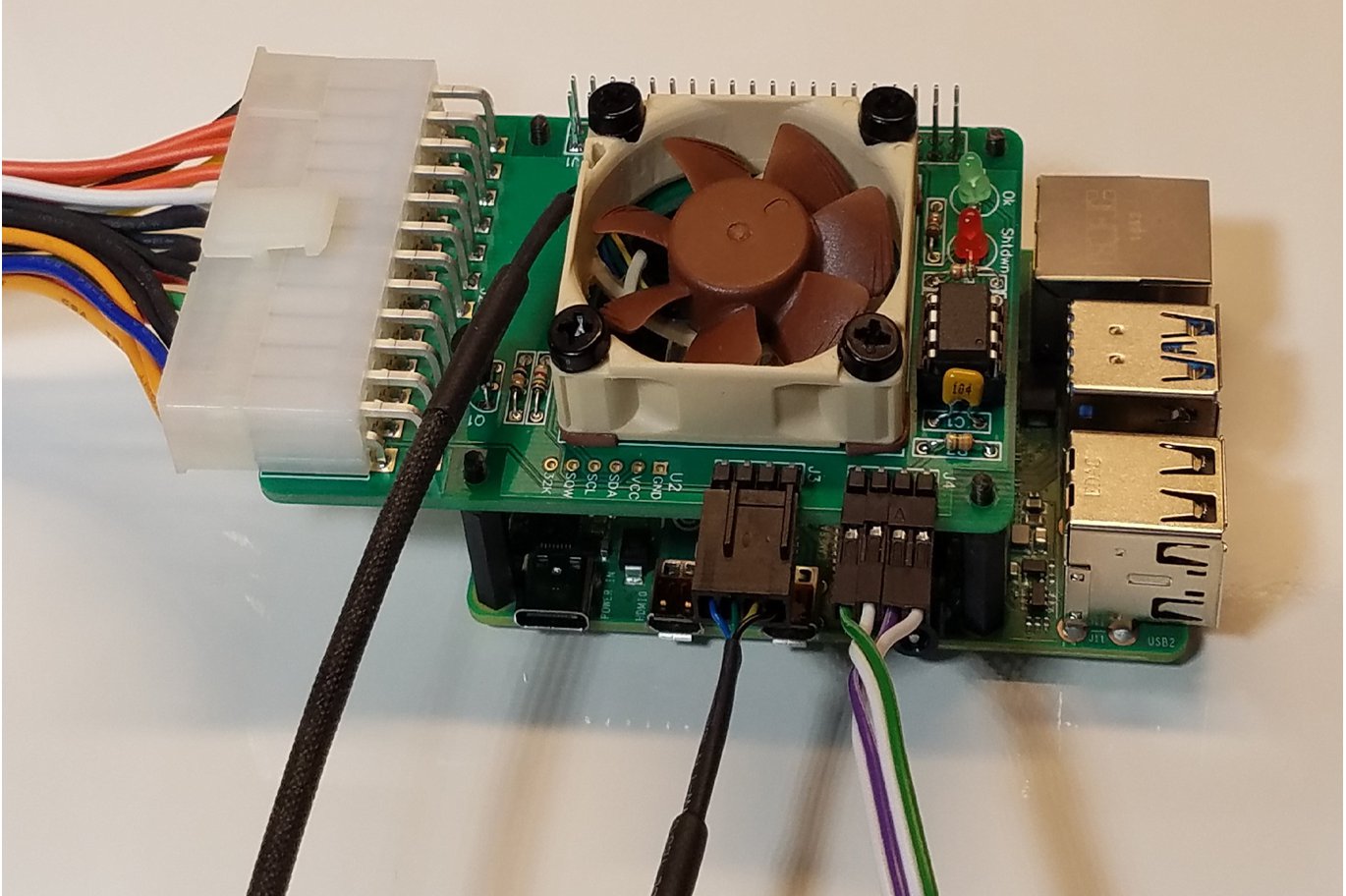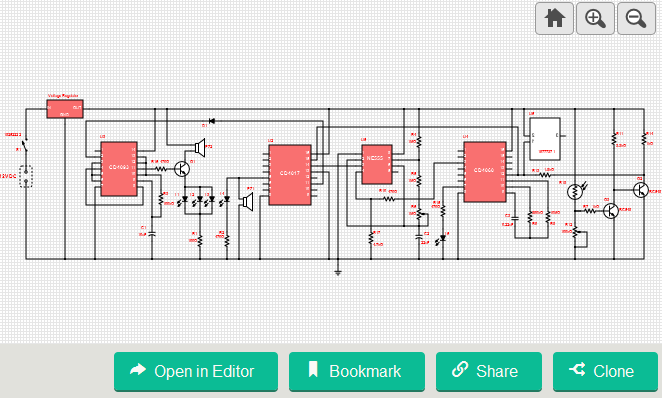
This reference design is an anti-drowsiness alarm, which aims to keep the drivers alert by disrupting one’s drowse. According to the study by U. S. National Highway Traffic Safety Administration (NHTSA), drowsy driving is the primary contributor of at least 100,000 auto crashes a year. Statistics shows that most crashes caused by drowsy driving occur from midnight to 8:00 am. During these times, a person often goes to sleep since it is dark outside.
The light dependent resistor (LDR) and the transistors (Q2 and Q3) serve as switch that prevents the oscillation of CD4060 binary counter. When the LDR is exposed to light (i.e., daytime), Q3 conducts while Q2 does not. This makes the RESET pin of CD4060 high to prevent it from oscillating. At night, Q3 does not conduct while Q2 conducts and pulls the RESET pin of CD4060 to ground. This starts the oscillations of CD4060 as indicated by the flashing of LED6. The internal oscillator of binary counter CD4060 oscillates at a frequency based on the values of R8, R9 and C3. The sensitivity of the LDR can be adjusted by the potentiometer R12. When the Q13 (pin 3) output of CD4060 becomes high, the RESET pin (pin 4) of the NE555 becomes high and it starts oscillating. Its pulse rate can be slightly adjusted using the potentiometer R6. The pulsed output of NE555 is then fed to the clock input of CD4017. The CD4017 is a decade counter with ten outputs, but only one of its outputs is high at a time and all the other outputs remain low. The output from NE555 serves as clock for CD4017. As a result, the Q1 output of CD4017 becomes high at the first positive edge from NE555 after 50 seconds. After 6 minutes, the Q6 output goes high and LED4 glows for one minute and the warning buzzer sounds. If the circuit is not reset using push-to-switch 1977737-1 after hearing the warning beep from PZ1, the counting of CD4017 continues and at the end of the 10th minute, the Q9 output becomes high to activate CD4093.
This circuit is designed to keep the drivers awake while driving at night. This is done by sounding intermittent beeps and by emitting flashing light. As long as Q9 output of CD4017 remains high, CD4093 oscillates and the piezobuzzer beeps and the white LEDs flash with a frequency determined by the values of R3 and C1.
Anti-Drowsiness Alarm – [Link]





